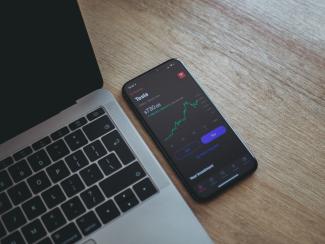
Market Update for April 21, 2023
It has been a while since my last post, as we have been very busy repositioning monies and doing new business into some exciting new products. Increased interest rates make the insurance company offerings much more palatable, so we are swimming in paperwork and activity- I suppose that’s a good thing!
The broad U.S. stock market is in what I would call “no man’s land” right now, about halfway between the June/October 2022 lows and the recent and all-time highs achieved at the very end of 2021/very beginning of 2022. Analysts like Mike Wilson, who were bearish heading into 2022, remain bearish now. Conversely, just turn on CNBC or Fox Business or Bloomberg TV and you will hear a never-ending stream of talking heads telling you to invest in the stock market. The reality is that most people “talk their own book” and remain either bearish or bullish almost indefinitely. I try to pay attention to when market watchers I trust change their minds. Dan Turov, for example, published an article in Barron’s unambiguously called “Buy Signal” 12/9/1974. He followed up decades later in the same publication with “Sell Signal” on 1/3/2000, and both were prescient calls. It is fairly rare, and I do not have a more recent example to share with you, but that is far more interesting to me than the normal blather from the bears and the bulls, who again, rarely change their tunes. Nouriel Roubini is a prominent economist, who became famous over the past couple decades due to his extremely pessimistic calls - his nickname in the press is “Dr. Doom.” Needless to say, his typical take is bearish and he continually expects the sky to fall. I would personally pay more attention to somebody like that if/when he makes a bullish, optimistic call, out of step with his normal doom and gloom.
It is my opinion that we are more likely to continue to ride the wall of worry up to the previous highs than we are to revisit the previous lows. This is largely contingent on the economy hanging in there, and not heading into a substantial recession. It feels and looks to me like there is a rolling recession across different sectors of the economy at different times, but that broadly we are not in a recession even now. I tend to agree with what Ed Yardeni. Anecdotally, ask yourself this: are there jobs available or are people unable to find work? I would say there are jobs available, although there is a substantial disconnect between what workers want to make and what employers are willing to pay - IE many of the jobs available are at or below $20/hour. When I try to go to a nice restaurant is it easy to get reservations? It is not. When I fly are the planes crowded again? They are. Private golf courses have waiting lists, there is an extreme dearth of houses available for sale, etc. I sometimes want to start an investment account that owns Dollar General/Walmart AND LVMH/Tiffanys, as the middle class seems to shrink into either the paycheck-to-paycheck crowd or advance into the wealthier echelon, through inheritances, promotions, raises, and bonuses.
The Federal Reserve is unlikely to raise rates many more times, although I am sure we will get another 0.25% increase, and quite possibly one or two more similar rate increases after that. Regardless, the bulk of their work has been done, and I find it no coincidence that inflation has almost been cut in half while the stock market has rebounded about halfway from the recent lows to the recent highs (as mentioned above).
I want to leave you with a few quotes I took down last year at our national conference from Joe Jordan, a great speaker and a financial industry veteran:
1. “Do you want to become rich, or would you rather have a guarantee you’d never be poor?” (most of my clients prefer the latter)
2. “Humble people don’t think less of themselves, they just think of themselves…less.”
3. “Purpose is not the thing you do, it’s the thing that occurs in others- when you do what you do.”
4. “Intrinsic value is measured by the size of the problem that you solve.”
5. And a market comment from Joe: “On average in a bull market cycle, 45% of the gain of that cycle comes in YEAR ONE.”

